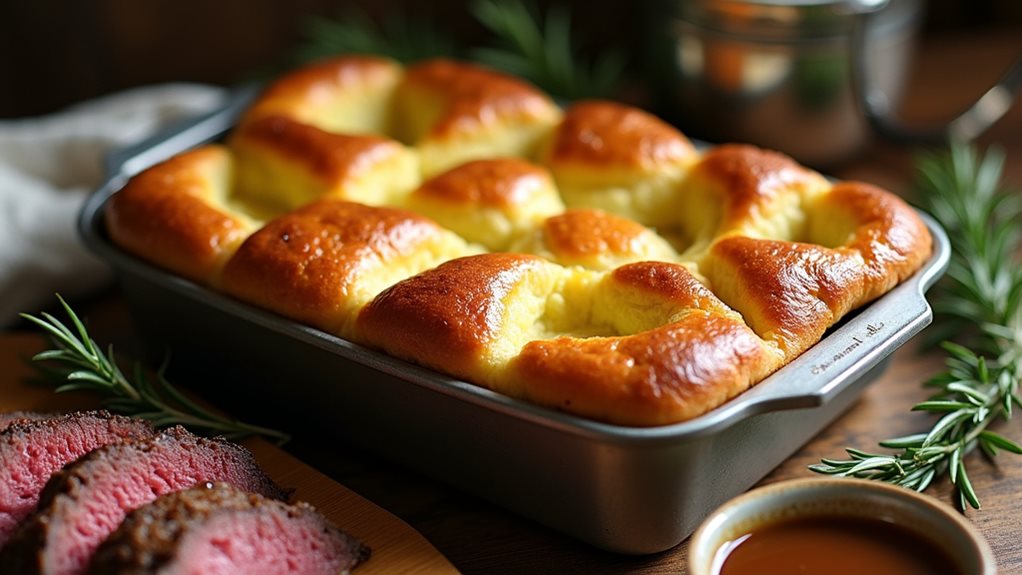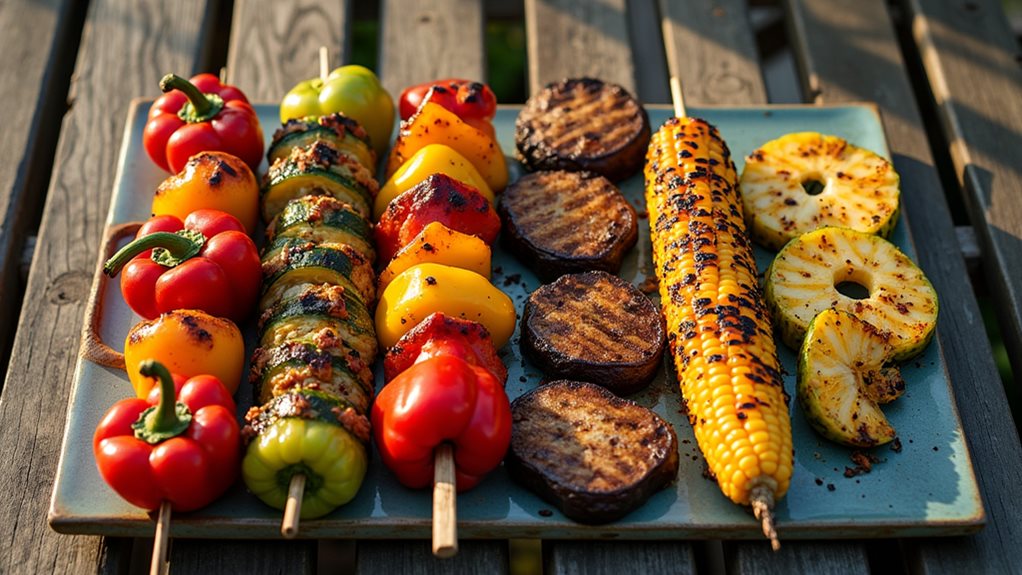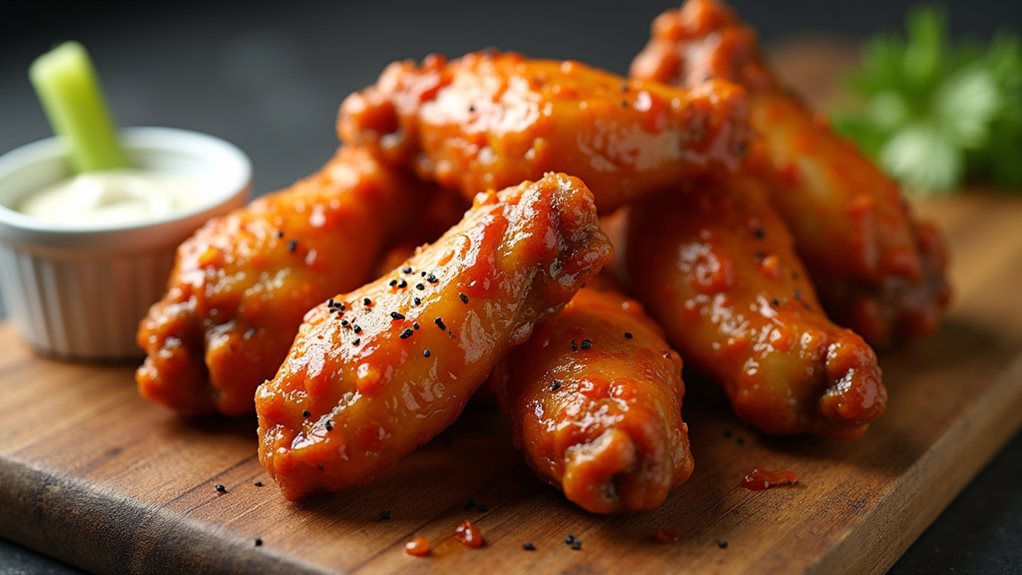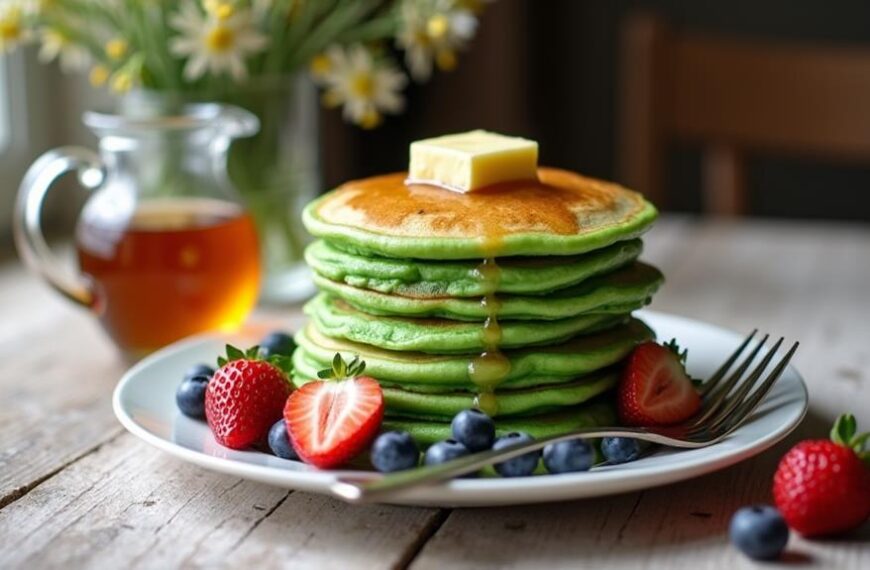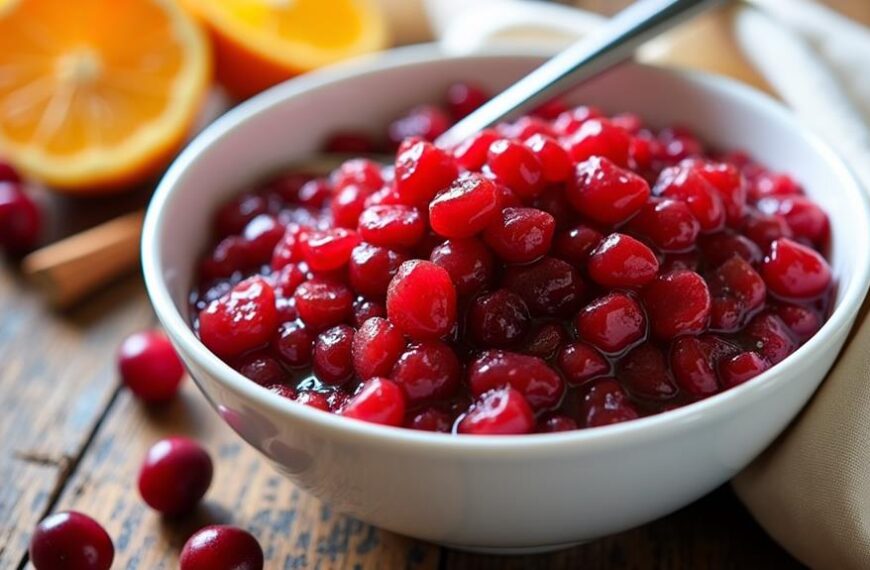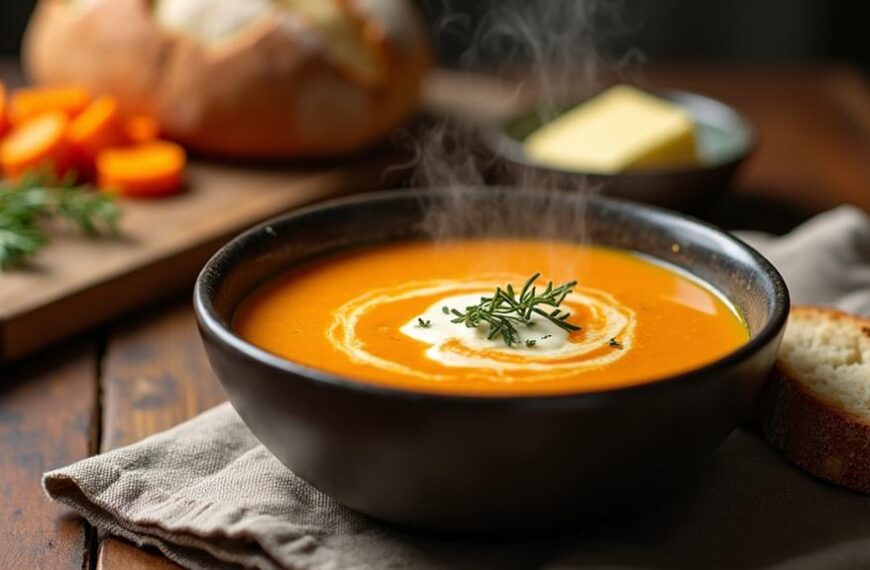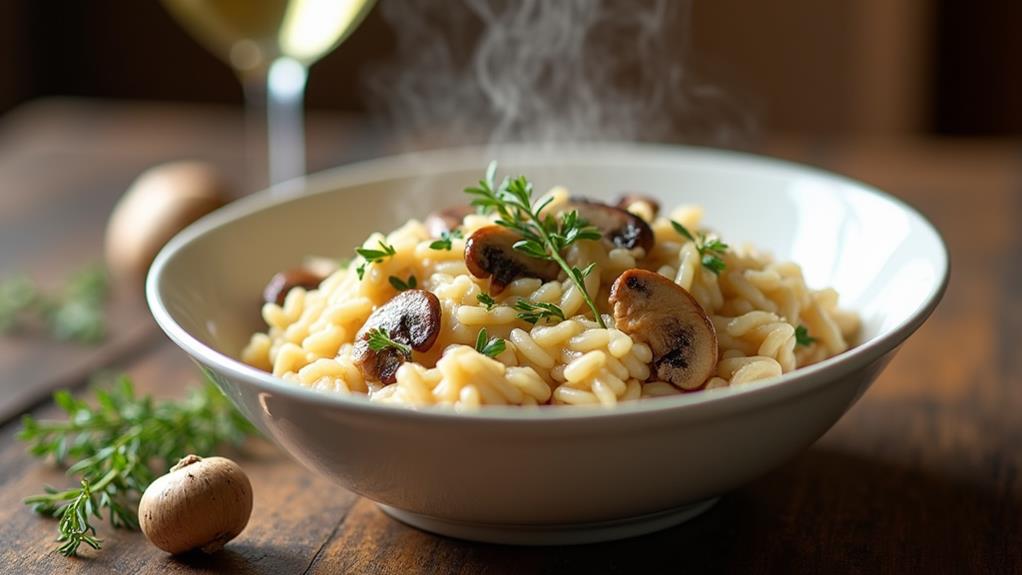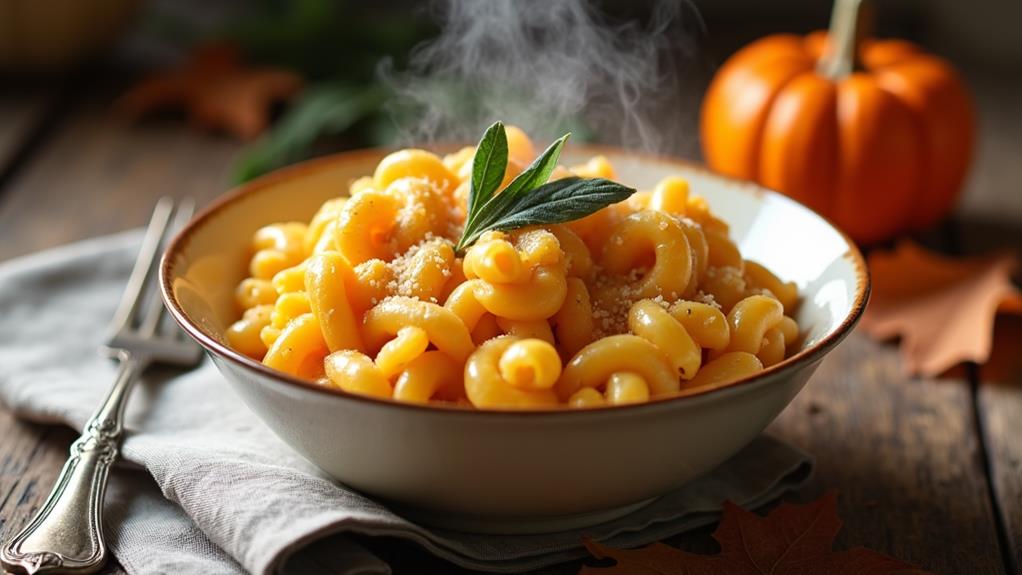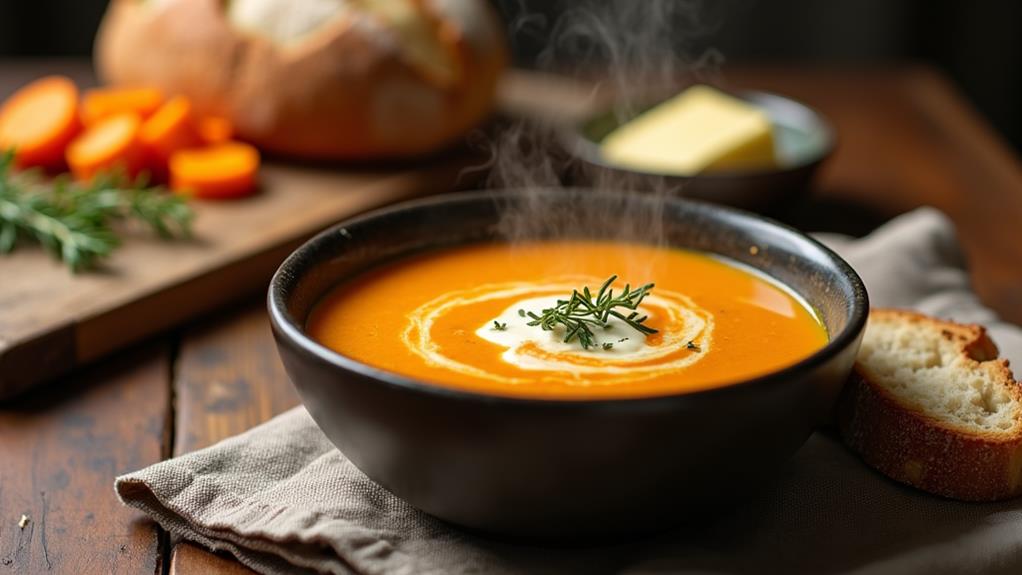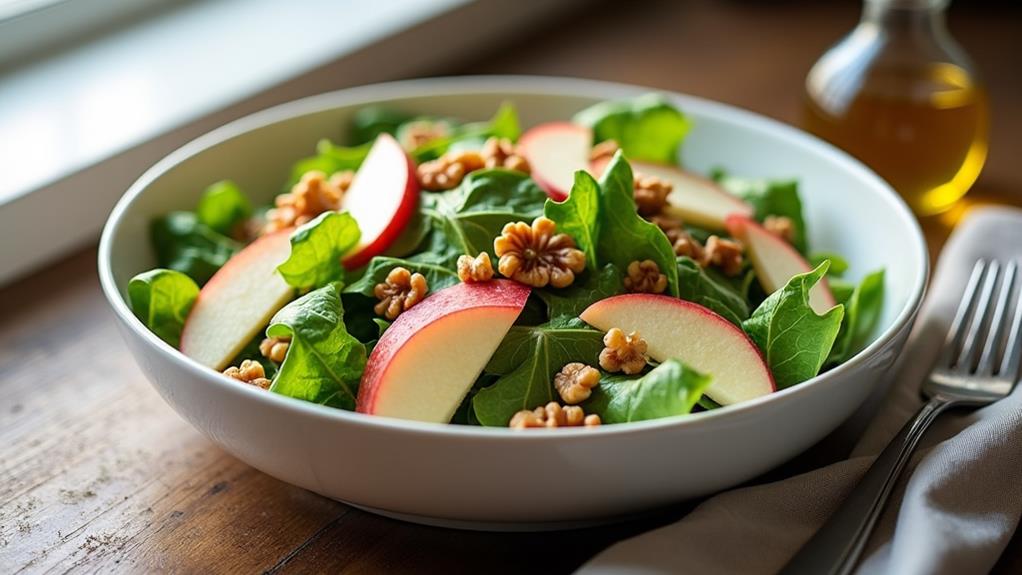I’ve spent years perfecting my Yorkshire pudding technique, and today I’m sharing my secrets for achieving those gloriously crisp edges and billowy centers that make this dish so irresistible. Yorkshire puddings aren’t just a side dish—they’re the crown jewel of any proper Sunday roast. The magic lies in the temperature contrast and precise timing that transforms simple ingredients into impressive golden puffs. Let me show you how to create these showstoppers that’ll have everyone at your table asking for seconds.
Key Takeaways
- Use hot beef drippings for authentic flavor and to achieve immediate cooking action when batter hits the pan.
- Beat eggs until thick and fluffy to incorporate air and create dramatic height when baking.
- Ensure milk and eggs are at room temperature for optimal rise and crispy texture.
- Bake at 400°F for 30-40 minutes until pudding is golden brown with crisp edges and soft center.
- Preheat the baking dish with drippings before adding batter to create that signature crispy exterior.
Why You’ll Love these Yorkshire Puds
Tradition at its finest, Yorkshire pudding transforms an ordinary Sunday roast into a memorable feast. I’ve perfected this recipe to create crispy, golden edges with a soft, pillowy center that soaks up gravy beautifully.
You’ll appreciate how these puddings puff dramatically in the oven, creating impressive height that never fails to elicit gasps from dinner guests.
What makes this recipe special is its versatility and foolproof technique. Using hot beef drippings gives these puddings their distinctive flavor, while the simple batter—just eggs, milk, flour, and salt—comes together in minutes.
I’ve found the 400°F temperature essential for achieving that perfect rise. Whether served alongside prime rib for Christmas dinner or a weekend family meal, these Yorkshire puddings will become your signature accompaniment.
What Ingredients are in These Yorkshire Puddings?
Yorkshire pudding is a classic British side dish traditionally served with roast beef. Dating back centuries, this simple yet delightful creation transforms basic pantry staples into a puffy, golden accompaniment that soaks up the savory meat juices beautifully.
When made properly, it should rise dramatically in the oven, creating a crisp exterior with a slightly soft center.
- 1/4 cup hot roast beef drippings
- 2 eggs
- 1 cup milk
- 1 cup sifted flour
- 1/2 teaspoon salt
The quality of your ingredients can make a notable difference in the final result. For the drippings, nothing beats those collected from a freshly roasted beef, as they carry all those complex, meaty flavors that define traditional Yorkshire pudding.
Room temperature eggs and milk will create a velvety batter that rises more evenly. And while the recipe seems straightforward, the magic happens in the technique—that screaming hot pan with sizzling drippings is non-negotiable if you want that dramatic puff we all crave.
How to Make Yorkshire Puddings
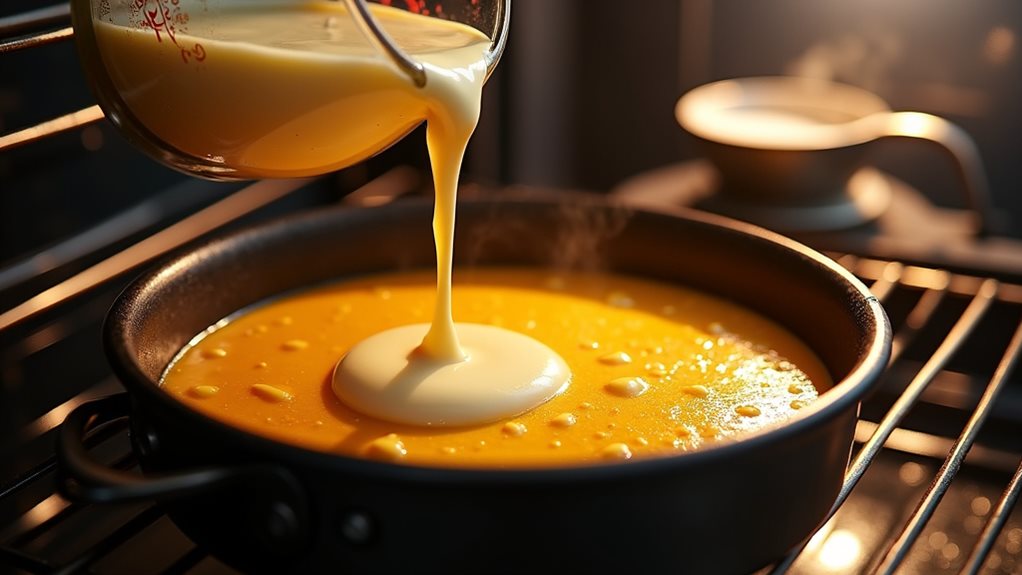
Making Yorkshire pudding is one of those kitchen rituals that feels a bit magical. To start, you’ll need to preheat your oven to 400°F and pour 1/4 cup of hot roast beef drippings into an 11 x 7 x 1 1/2-inch baking dish. The dish needs to be kept hot—this is non-negotiable for achieving that impressive rise. The hot fat creates a sizzle when the batter hits it, which helps create those lovely puffy edges we all crave.
For the batter, take 2 eggs and beat them until they’re thick and piled softly. This might take a few minutes, but it’s worth the effort for the right texture. Using a professional kitchen mixer will make this process significantly faster and produce more consistent results. Once your eggs are ready, add 1 cup of milk, 1 cup of sifted flour, and 1/2 teaspoon of salt. Beat everything together with a rotary beater until even. Don’t worry about a few tiny lumps—they’ll work themselves out.
Now comes the exciting part: pour this mixture over those hot meat drippings, which should be nearly smoking at this point. The batter will begin to cook immediately around the edges.
Pop the dish into your preheated oven and bake for 30 to 40 minutes, or until your pudding is beautifully puffed and browned. The transformation is rather remarkable, from liquid batter to a crisp-edged, hollow-centered delight.
Timing is everything with Yorkshire pudding, so once it’s done, cut it into squares and serve immediately alongside a standing rib roast of beef. The pudding waits for no one—it starts to deflate the moment it leaves the oven, which is part of its charm, really.
Yorkshire Pudding Substitutions and Variations
While the classic recipe creates that iconic puff and flavor, you’ll find several ways to adapt Yorkshire pudding to suit your needs or pantry contents.
If beef drippings aren’t available, I recommend substituting vegetable oil, butter, or even duck fat for equally delicious results. Each alternative imparts its own unique character to the finished pudding.
For dietary restrictions, you can use plant-based milk instead of dairy, though the rise might be slightly less dramatic.
Some bakers add herbs like thyme or rosemary to the batter, while others incorporate a tablespoon of grated Parmesan for a savory twist.
I’ve even seen mini Yorkshire puddings baked in muffin tins for elegant individual servings, perfect for dinner parties where presentation matters.
What to Serve with Yorkshire Puddings
Traditionally served alongside a succulent standing rib roast, Yorkshire pudding pairs beautifully with numerous main dishes and sides to create a complete meal.
I like to serve mine with a rich brown gravy made from the same beef drippings used in the pudding, creating a harmonious flavor profile.
Beyond the classic roast beef pairing, I’ve found Yorkshire pudding complements roast chicken, lamb, or even pork loin wonderfully.
For vegetables, I recommend roasted carrots, parsnips, or Brussels sprouts, which offer contrasting textures to the pudding’s crispy exterior and soft interior.
Mashed potatoes provide a creamy counterpoint, while steamed green beans or peas add freshness to balance the richness.
Don’t forget a bold red wine to cut through those savory flavors!
Final Thoughts
After you’ve mastered this Yorkshire pudding recipe, you’ll understand why it remains a beloved staple of British cuisine.
The perfect combination of crispy exterior and soft, pillowy center creates a delightful accompaniment to a traditional roast beef dinner.
I’ve found that the key to success lies in those hot drippings and the proper oven temperature.
Don’t be discouraged if your first attempt isn’t perfect—achieving that dramatic rise takes practice.
Remember to serve immediately when it’s at its puffiest and most impressive.
With time, you’ll develop an intuitive feel for the batter consistency and timing.
Yorkshire pudding isn’t just food—it’s a celebration of culinary tradition that brings warmth to any gathering.
I hope this recipe becomes a treasured addition to your family meals.
For a nutritious alternative, try experimenting with a Harvest Vegetable Soup that offers high fiber content and supports healthy digestion.

